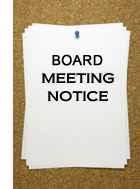Source: Adrian J. Adams Es
 QUESTION: Ours is a 60-unit HOA. One resident has served many years as a board member, president, and rule-enforcer. She helped newcomers and everyone with all manner of issues and problems. While president she oversaw the expenditure of hundreds of thousands of dollars to restore the property after years of neglect.
QUESTION: Ours is a 60-unit HOA. One resident has served many years as a board member, president, and rule-enforcer. She helped newcomers and everyone with all manner of issues and problems. While president she oversaw the expenditure of hundreds of thousands of dollars to restore the property after years of neglect.
 QUESTION: Ours is a 60-unit HOA. One resident has served many years as a board member, president, and rule-enforcer. She helped newcomers and everyone with all manner of issues and problems. While president she oversaw the expenditure of hundreds of thousands of dollars to restore the property after years of neglect.
QUESTION: Ours is a 60-unit HOA. One resident has served many years as a board member, president, and rule-enforcer. She helped newcomers and everyone with all manner of issues and problems. While president she oversaw the expenditure of hundreds of thousands of dollars to restore the property after years of neglect.
A succession of community managers and vendors came to rely on her to be available, 24/7, for assistance and action. Even though she is no longer on the board, she is our institutional historian. Many consider her the go-to person.
So, what’s the problem? She interferes with operations by telling vendors what to do or not do, delivering rules to residents who violate them, refusing to turn over keys to display cases, etc. What can be done to keep the good and stop the bad?
RECOMMENDATION: Someone who has worked that hard for the community has a sense of pride and ownership in the development. When that happens, it is sometimes hard for them to let go of direct involvement. A couple of board members should take her to lunch for a gentle conversation. Her years of service have earned her deference and praise. Let her know that her actions, while well-intentioned, create potential liability. Tell her you want to protect her from harm she may unintentionally cause herself and the association. Hopefully, that will eliminate the unwanted behavior and preserve the good.



